Links to external sources may no longer work as intended. The content may not represent the latest thinking in this area or the Society’s current position on the topic.
Dissolved organic matter in freshwaters: nature, origins and ecological significance
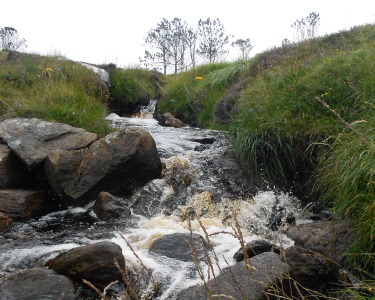
Theo Murphy international scientific meeting organised by Professor Penny Johnes, Professor Davey Jones, Professor Stephen Maberly and Professor Richard Evershed FRS.
Dissolved organic matter (DOM) plays an important role in ecosystem function. Its flux to waters is rising globally, driven by population growth, agricultural intensification, land use and climate change. This meeting brought together a cross-disciplinary community to debate and discuss current understanding of the nature, origins and ecological significance of DOM in freshwaters, and identify exciting opportunities for future research.
Speaker biographies and abstracts are available below. Recorded audio of the presentations is also available below.
Attending this event
This event has taken place.
Enquiries: contact the Scientific Programmes team
Organisers
Schedule
Chair

Professor Penny Johnes, University of Bristol, UK

Professor Penny Johnes, University of Bristol, UK
Penny Johnes is Professor of Biogeochemistry at the University of Bristol. She has researched the biogeochemical function of inland and coastal waters, and the impacts of landscape character and environmental change on their ecological and chemical status for the past 30 years. Her current research includes the NERC DOMAINE Large Grant programme which is characterising the nature, origins and ecological significance of dissolved organic matter in freshwaters across gradient of nutrient enrichment. It also include the Demonstration Test Catchments programme funded by the Defra, which has been testing the hypothesis that it is possible to reduce the rate of nutrient flux to freshwaters and its impact on ecosystem health through the implementation of on-farm mitigation measures. Key findings have highlighted the importance of organic matter fractions in the total nutrient load transported to freshwaters; the importance of short-term, extreme flow conditions in controlling the nutrient source/sink function in aquatic ecosystems; and the ecosystem functional role of DOM in freshwaters.
| 09:00 - 09:15 | Welcome by the Royal Society and lead organiser | |
|---|---|---|
| 09:15 - 10:00 |
Keynote: DOM in the long arc of environmental science: looking back and thinking ahead
Dissolved organic matter (DOM) is ubiquitous, enigmatic and influences physical, chemical, and biotic processes throughout the Earth system. A unified model for DOC production and transport has emerged over the last 40 years that links terrestrial and aquatic ecosystems. High DOM concentrations in streams and rivers can be found in regions with large net production of terrestrial DOM (roughly the balance between net primary production and organic matter mineralization), and low retention in sesquioxide- or clay-rich mineral soils. Although high concentrations can be found in surface waters of any biome, the overall levels of DOM vary predictably across biomes with soil C and N dynamics. Because of analytical limitations and the importance of DOM in a wide range of processes, interest in DOM over the past 100 years has been driven by a variety of research questions. From the 1920s until the 1970s, research on DOM was focused on the yellow colour “gelbstoff era” and largely on the effects of this colour on primary productivity in “dystrophic” lakes. This era of DOM work ended with a flurry of papers on stream organic matter budgets and experimental studies of organic matter uptake in the 1970s. From the 1970s until the early 2000s, the “elemental era”, new analytical techniques pioneered by Menzel (DOC) and Solorzano (DON, DOP) fostered interest in measuring the individual chemical elements that make up DOM. This era was marked by widespread development of organic carbon budgets for river reaches and whole watersheds. The current era, 2000 – present, can be thought of as the time when a “unified theory of DOM” was developed, which includes topics such as trophic transfers in aquatic foodwebs, production and evasion of greenhouse gases in aquatic systems, photodegradation of DOM, influence of DOC on N dynamics, and the role of DOM in the production of disinfection byproducts and acid-base reactions. From decade to decade, the dominant research questions have varied, but they are unified by a single overarching thread: a focus on understanding the functional consequences of DOM in aquatic ecosystems. Professor McDowell proposes that it is time to develop a new era focusing on understanding the ecological and evolutionary significance of DOM. This era will be spurred by much better understanding of the temporal dynamics of DOM (both long-term trends and sensor-enabled short-term dynamics), multiple analytical approaches to quantifying the organic chemistry of DOM, and a re-assessment of the origins of DOM. Fundamental questions about the origins of DOM abound. In a world that is constrained by energy and nutrient availability, why do some tree species leach more DOC from their leaves or needles than others? Are increases in stream DOC a return to background conditions, or a temporary “flushing” of DOC accumulated during periods of high atmospheric deposition? Why do phytoplankton, Sargassum, and mangroves each “leak” DOC into water? Are there selective pressures that result in these persistent losses of DOC in terrestrial and aquatic ecosystems? Finally, the fundamental conundrum underlying the study of DOC dynamics in fresh waters must be addressed. Our community largely focuses on detailed study of ambient DOC pools, but arguably those are just the leftovers. What was on the original menu? 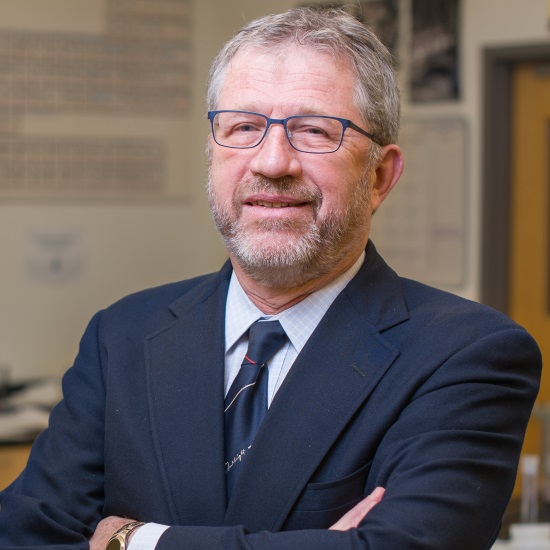
Professor William H McDowell, University of New Hampshire, USA

Professor William H McDowell, University of New Hampshire, USAWilliam H McDowell is Professor of Environmental Science in the Department of Natural Resources and the Environment at the University of New Hampshire in Durham, USA. He has a background in ecosystem ecology and has worked on land-water interactions for over 40 years. He published some of the earliest descriptions of the origin and controls on dissolved organic matter in streams and continues to study organic matter dynamics with a wide range of techniques including in situ optical sensors. Dr McDowell is former Chairperson of the Department of Natural Resources, serves as Director of the NH Water Resources Research Center, and currently holds a UNH Presidential Chair. He is co-chair of the US International LTER Committee. McDowell teaches courses on watershed management and ecosystem ecology. He is author of over 250 publications on biogeochemistry and has been cited in peer-reviewed articles over 18,000 times. He conducts long-term research in New Hampshire, Czech, and Puerto Rican watersheds, with a focus on understanding the interactions between nutrients and dissolved organic matter and linking critical zone structure to biotic processes. He has served as PI of the Luquillo Critical Zone Observatory since 2013. |
|
| 10:00 - 10:15 | Discussion | |
| 10:15 - 10:45 |
Sources, processing and fate of aquatic carbon from headwaters to the sea
Dissolved organic matter (DOM) concentrations have been rising in many European and North American headwaters for over 30 years, with implications for aquatic ecosystem function, drinking water supplies and the flux of carbon from land to ocean. This talk will consider the key drivers of these increases, their spatial extent, and their likely future trajectory. It will also consider the fate and impact of terrestrially derived organic carbon fluxes along the aquatic continuum from headwaters to ocean; the major controls on aquatic DOM processing; and the overall significance of land-water carbon fluxes in the global carbon budget. 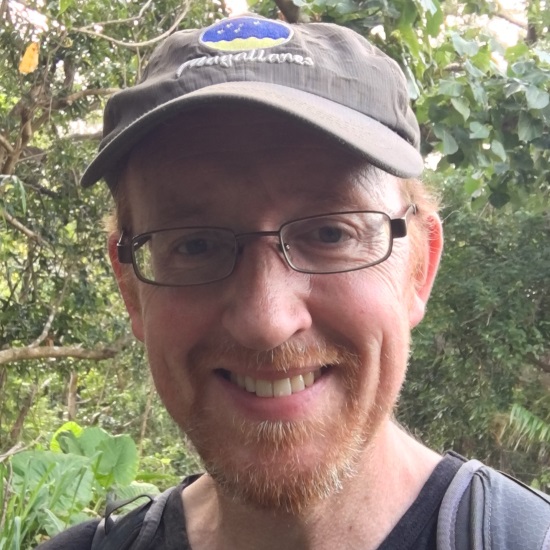
Professor Chris Evans, Centre for Ecology and Hydrology, UK

Professor Chris Evans, Centre for Ecology and Hydrology, UKProfessor Chris Evans works on carbon cycling in aquatic and terrestrial ecosystems, with a particular focus on peatlands, greenhouse gases and the role of aquatic carbon fluxes in the global carbon cycle. His field-based research extends from the high latitudes to the tropics, and covers a range of temporal and spatial scales, ecosystems, scientific questions and policy issues. He is currently the CEH co-lead for the NERC LOCATE project on land-ocean carbon cycling, which aims to improve understanding of the processing and fate of terrestrially-derived organic matter along the freshwater-marine continuum. Chris was a Lead Author of the Flooded Lands chapter of the 2019 IPCC Agriculture, Forestry and Other Land-Use Guidelines refinement, and the 2013 IPCC Wetland Supplement, for which he helped to develop methods to incorporate CO2 and CH4 emissions from ditches, rivers, ponds and reservoirs in national greenhouse gas emissions inventories. He is a visiting professor at the Swedish University of Agricultural Sciences, where he previously held the position of King Carl XVI Gustaf’s 20th Visiting Professor in Environmental Science for his work on aquatic carbon cycling. |
|
| 10:45 - 11:00 | Discussion | |
| 11:00 - 11:30 | Coffee break | |
| 11:30 - 12:00 |
The “new normal” of catastrophic tropical cyclone flooding in North Carolina (USA) coastal watersheds: Implications for organic matter and nutrient cycling
Coastal North Carolina has experienced 35 tropical cyclones and 3 record cyclone-driven flood events in the past two decades (Hurricanes Floyd–1999, Matthew–2016 and Florence–2018), causing catastrophic human impacts from flooding and leading to major alterations of water quality, fisheries habitat and overall ecological conditions of the USA’s second largest estuarine complex, the Albemarle-Pamlico Sound. The increased frequency and magnitudes of these events suggests that we have entered a “new normal” in rainfall associated with these storms. Analysis of continuous cyclone-related rainfall records for coastal NC since 1898 reveals a period of unprecedentedly high precipitation since the late 1990’s. Indeed, six out of seven of the “wettest” storm events over this >120 year record have occurred during the past two decades. The team examined freshwater discharge, nutrient (nitrogen and phosphorus) and carbon inputs, hypoxic potentials and phytoplankton community responses to these episodic events and compared them to seasonal and interannual patterns in the Neuse River Estuary, a major estuarine tributary of the Albemarle-Pamlico Sound system. Results indicate that these events lead to large inputs of organic matter and nutrients, which constitute a significant percentage of annual loadings, the biogeochemical impacts of which are discussed. We have entered a new climatic regime characterised by more frequent and extreme precipitation events, with major ramifications for hydrology, carbon and nutrient cycling, water quality and habitat conditions in this and possibly other coastal regions. 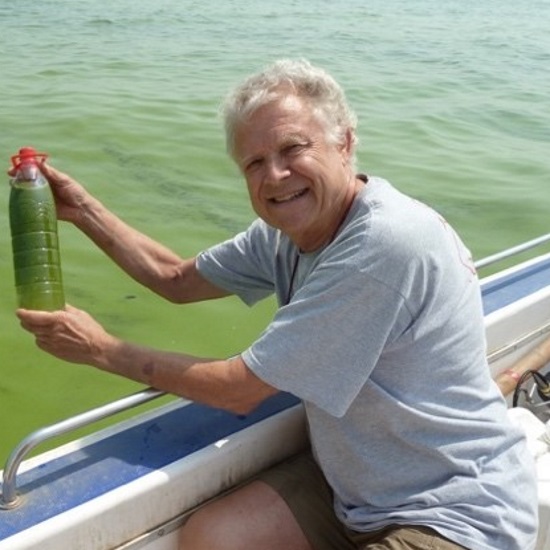
Professor Hans Paerl, University of North Carolina at Chapel Hill, Institute of Marine Sciences, USA

Professor Hans Paerl, University of North Carolina at Chapel Hill, Institute of Marine Sciences, USAHans W Paerl is the Kenan Professor of Marine and Environmental Sciences at the University of North Carolina’s Institute of Marine Sciences. His research addresses microbially-mediated nutrient/carbon cycling and primary production dynamics, environmental controls and management of harmful algal blooms, and assessing effects of human and climatic alterations of biogeochemical cycling, water quality and sustainability of inland, estuarine and coastal marine waters. He has published over 300 peer reviewed articles and book chapters on these subjects. He received the 2003 G. Evelyn Hutchinson Award from the Association of the Sciences of Limnology and Oceanography, and the 2011 Odum Award from the Coastal and Estuarine Research Federation for addressing the causes, consequences and controls of eutrophication in aquatic ecosystems. In 2015, he was named a Fellow of the American Geophysical Union. |
|
| 12:00 - 12:15 | Discussion | |
| 12:15 - 12:45 |
Salt, Acid, Waste: human impacts on organic matter quantity and quality in river networks
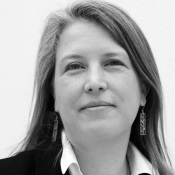
Professor Emily Bernhardt, Duke University, USA

Professor Emily Bernhardt, Duke University, USADr Emily S Bernhardt is the James B Duke Professor of biogeochemistry in Duke’s Department of Biology. Dr Bernhardt’s research is motivated by a desire to understand how our use of watersheds alters energy and nutrient cycling in receiving streams and wetlands and the extent to which management efforts can reverse, ameliorate or improve aquatic ecosystem structure and function. Dr. Bernhardt has been recognized for her scholarly productivity and impact with the 2004 HG Hynes Award from the Society for Freshwater Science; the 2013 Yentsch-Schindler award from the Association for the Sciences of Limnology and Oceanography; the 2015 Mercer Award from the Ecological Society of America; and a 2015 Friedrich Wilhelm Bessel Research Award from the Alexander von Humboldt Foundation. She is a Leopold Leadership Fellow and a Fellow of the Ecological Society of America. |
|
| 12:45 - 13:00 | Discussion |
Chair
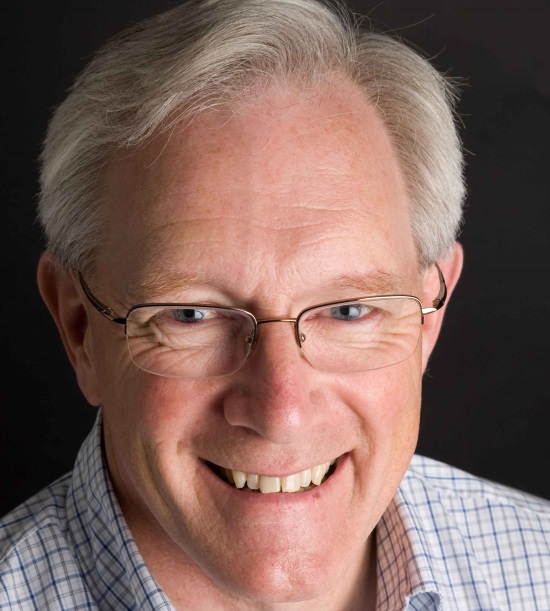
Professor Richard Evershed FRS, University of Bristol, UK

Professor Richard Evershed FRS, University of Bristol, UK
Professor Evershed heads a large biogeochemistry group at the University of Bristol which has an international reputation for developing and applying state-of-the-art chromatographic and mass spectrometric techniques to obtain molecular and isotopic information from organic compounds in extant and extinct environments. His research is founded on a life-long fascination with the natural world and recognition early in his career of the potential of linking chromatography to mass spectrometry, in all their forms, to unravel the complex mixtures of compounds that exist in the environment. He has tirelessly promoted the idea of using molecular level information to understand the nature and functioning of ecosystems in the past and present.
| 14:00 - 14:45 |
Keynote: frontiers and challenges in isotopic characterisation of DOM
Dissolved organic matter (DOM) in natural waters is comprised of highly complex mixtures of components that reflect myriad biotic and abiotic production, modification, translocation and decomposition processes. This complexity presents formidable challenges in our ability to characterise DOM, understand its interactions with other carbon pools, and predict its response to natural and anthropogenic forcing. We currently lack a comprehensive understanding of the dynamics and pathways of DOM production, transformation and transport, as well as links between dissolved and particulate carbon phases. Recent analytical and instrumental advances are yielding detailed information on the chemical composition of DOM, however bridging information gleaned at the molecular level with dynamics observed in bulk DOM remains an elusive challenge. In this context, determination of isotopic characteristics of specific DOM constituents holds potential to provide key information on the sources and cycling of DOM. While diverse source-specific “biomarker” compounds are routinely targeted for stable isotopic and radiocarbon characterisation of particulate organic matter (POM), such approaches are much less well developed for DOM. This presentation will provide examples of insights derived from current molecular 14C investigations of POM in aquatic systems and how they may inform DOM isotopic studies. Some glimpses into the isotopic variability within DOM in a range of environments spanning soils to fluvial systems will be provided. Finally, examples that show how isotopic (14C) gradients in space and time may be exploited to derive novel information on DOM sources and cycling will be presented, with the goal of motivating further research in this area. 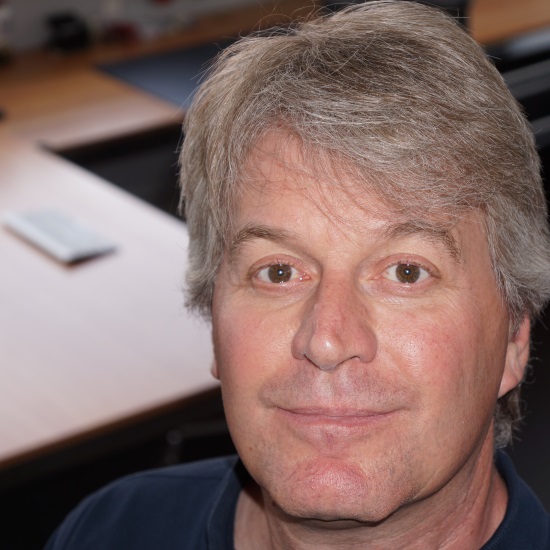
Professor Timothy Eglinton FRS

Professor Timothy Eglinton FRSTimothy Eglinton FRS is Professor of Biogeoscience within the Department of Earth Sciences at ETH Zürich. Eglinton obtained a BSc in Environmental Science at the Plymouth Polytechnic, and MSc and PhD in Organic Geochemistry at the University of Newcastle-upon-Tyne. Following postdoctoral research positions at Delft Technical University (Netherlands) and Oslo University (Norway), he joined Woods Hole Oceanographic Institution in 1989. He was a member of the Scientific Staff there until 2010, when he joined ETH. Professor Eglinton’s research program is centered on tracing the origin, cycling and legacy of biospheric carbon, and to understand the role of organic matter production, remineralization, transport, and burial as a component of the global carbon cycle. He focusses on processes on the continents and in the oceans, as well as the transfer of carbon between these systems. He has pioneered radiocarbon measurements at the molecular level as a tool to examine carbon cycle processes. More information is available at: http://www.biogeoscience.ethz.ch/. |
|
|---|---|---|
| 14:45 - 15:00 | Discussion | |
| 15:00 - 15:30 |
Exploring DOM in large lakes: Successes and challenges
The world’s largest five freshwater lakes include both tropical meromictic and temperate holomictic lakes ranging in age from twenty-five million to ~10,000 years old. They contain >50% of earth’s surface liquid freshwater. Three of the lakes support extensive human populations in their watersheds. Despite their demonstrated importance in economic, cultural, and environmental milieus, large lakes are understudied in terms of carbon cycling, including the roles of dissolved organic matter (DOM)--as dissolved organic carbon (DOC); as chromophoric dissolved organic matter (CDOM); and at the compound class or molecular level. Existing data shows that large lakes have lower DOC and CDOM concentrations and clearer water than the global lake median. However, available CDOM/chlorophyll data (for Lake Superior) shows a ratio higher than mean ocean surface water and much higher than would be predicted by a temperate-lake-based relationship between lake area and CDOM/chlorophyll. Qualitative characterisation indicates that DOM in Lakes Baikal, Superior, and Michigan contains a large proportion of terrestrially-derived but reworked organic matter. No such data exists for Lakes Malawi and Tanganyika. Large lakes present unique challenges for DOM studies as they have differing inorganic matrices (in terms of major ions & oxidation levels), have variable levels of non-chromophoric DOM, and require oceanographic-style efforts to sample at sufficient temporal and spatial resolution. As these lakes are critical resources for humans and key environmental systems on a global scale, and as they are subject to climate change, land-use and lake-use pressures, such efforts should be an upcoming focus for aquatic scientists. 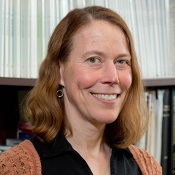
Professor Elizabeth Minor, University of Minnesota Duluth, USA

Professor Elizabeth Minor, University of Minnesota Duluth, USALiz Minor is a full professor in the Department of Chemistry and Biochemistry and at the Large Lakes Observatory at the University of Minnesota Duluth, USA. She received her BS in Chemistry from The College of William and Mary in Virginia (Williamsburg, VA, USA) and her PhD in Marine Chemistry and Geochemistry from the MIT/WHOI Joint Program in Oceanography and Ocean Engineering (Woods Hole, MA, USA). She did post-doctoral work in macromolecular mass spectrometry at FOM-AMOLF (Amsterdam, The Netherlands). Her research group studies carbon cycling in lake, river, and ocean water columns across seasonal to decadal scales. As part of this work, they apply spectroscopy and mass spectrometry approaches to characterize the molecular and isotopic composition of aquatic organic matter components. Minor is the author/co-author of 54 papers on carbon cycling in aquatic systems (with 21 of these focused upon studying large lakes systems). |
|
| 15:30 - 15:45 | Discussion | |
| 15:45 - 16:00 | Tea break | |
| 16:00 - 16:30 |
Novel methods for compound specific determination of DOM composition and their relation to landscape character using examples from the NERC DOMAINE platform
The flux of dissolved organic matter (DOM) into rivers is rising due to a range of factors, including inputs of organic wastes from livestock production, discharge of sewage effluent, as well as the mobilisation of soil organic matter stores. There is a growing body of research showing that many DOM compounds are bioavailable and can be rapidly assimilated by stream biota, which may have important implications for nutrient cycling and riverine health. With this in mind, it is vital to gain a more comprehensive understanding of the composition of riverine DOM at a molecular level. DOM is an extremely complex mixture of individual compounds and therefore poses some analytical challenges. Most often, DOM is quantified as a bulk nutrient fraction then characterised by parameters such as hydrophobicity, molecular weight, aromaticity and functional group. However, recent advancements in analytical approaches can help allowing more detailed characterisation to compound level. Typically, molecular-scale analysis of DOM has been carried out in a targeted way, where compounds of interest are analysed. However, here, we propose a hierarchical approach to DOM characterisation using a suite of cutting-edge analytical techniques in order to obtain a wide analytical window spanning different size fractions and polarities. A number of UK-based case studies are used to illustrate the power of using this combination of analytical techniques to provide a truly untargeted approach to DOM characterisation. 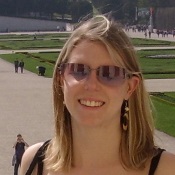
Dr Charlotte Lloyd, University of Bristol, UK

Dr Charlotte Lloyd, University of Bristol, UKCharlotte Lloyd obtained her PhD in Geography from the University of Bristol in 2012, researching the transport of livestock-derived organic matter through hillslopes, using a molecular approach. She then completed post-doctoral work at the University of Bristol as part of the Defra funded Hampshire Avon Demonstration Test Catchment project, where she developed numerical analytical methods for interrogating high temporal resolution water quality data. She moved to the School of Chemistry at the University of Bristol in 2014 in order to join the NERC funded DOMAINE programme where she has developed laboratory analytical methods for the molecular characterisation of dissolved organic matter in freshwater systems. Her work combines molecular chemistry with hydrology in order to enhance our understanding of the impact of organic compounds in the environment. |
|
| 16:30 - 16:45 | Discussion | |
| 16:45 - 17:15 |
Molecular diversity of dissolved organic matter in freshwater and marine systems
Organic remnants of aquatic organisms have accumulated over thousands of years in dissolved form to one of the largest organic carbon pools on our planet’s surface. Dissolved organic matter (DOM) contains more carbon than the entire vegetation on Earth combined. The reasons behind its persistence and its potential for carbon storage in the future are unknown. During growth and upon death, cells release a myriad of organic compounds on which microorganisms grow. A minor fraction of this organic matter decomposes so slowly that it has persisted in the global ocean for millennia. The resulting mixture of largely unknown compounds has reached an extraordinarily high level of molecular diversity. The current paradigm is that microbes cannot decompose this mixture because suitable metabolic pathways have not evolved. Here, Professor Dittmar presents an emerging, alternative concept that assumes the existence of enzymatic machineries that continuously transform any form of DOM, but due to extreme dilution encounters of cells and substrate units are rare events in the ocean. According to this concept, marine microbes appear most powerful in decomposing any form of organic matter, but rates slow down as molecular diversity increases. 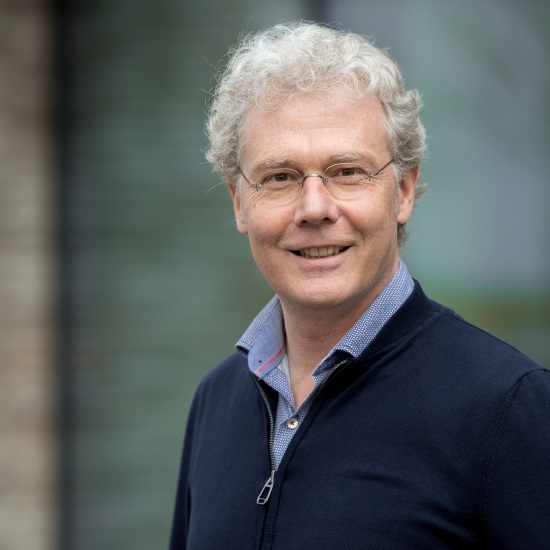
Professor Thorsten Dittmar, University of Oldenburg, Germany

Professor Thorsten Dittmar, University of Oldenburg, GermanyThorsten Dittmar is professor for Marine Geochemistry and director of the Institute for Chemistry and Biology of the Marine Environment (ICBM) at the University of Oldenburg. He studied geoecology and marine chemistry (Universities of Bayreuth and Bremen, Germany). Before he was appointed professor in Oldenburg, he was a group leader at the Max Planck Institute (MPI) for Marine Microbiology in Bremen and professor for Chemical Oceanography at Florida State University (USA). He also worked several years at universities in Belém (Brazil) and Seattle (USA). Dittmar’s research focus is the organic geochemistry of the oceanic water column. Most of the organic matter in the ocean resides there in dissolved form, and the oceans are among the largest organic carbon pools on Earth’s surface. Dittmar introduced novel ultrahigh-resolution mass spectrometry techniques in the marine sciences to address long-standing open questions in the oceanic carbon cycle. |
|
| 17:15 - 17:30 | Discussion | |
| 17:30 - 18:30 | Poster session |
Chair
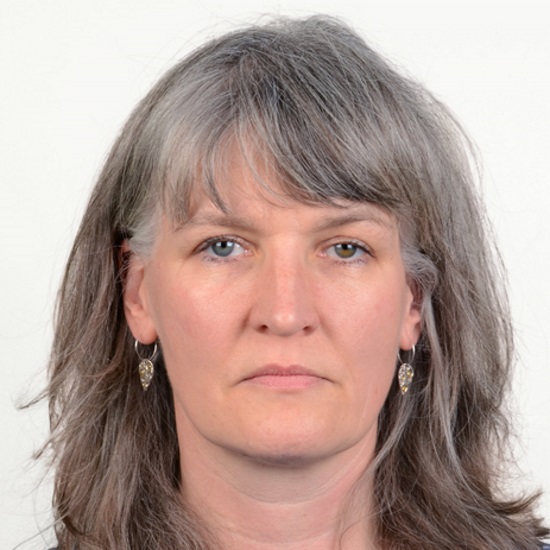
Professor Susan Waldron, University of Glasgow, UK

Professor Susan Waldron, University of Glasgow, UK
Susan holds a Chair in Biogeochemistry in the School of Geographical and Earth Sciences, University of Glasgow. She is an Earth System scientist who focusses on biogeochemical processes in the shallow Earth surface. She is particularly interested in the C cycle and understanding how this responds to change - be this in Chinese karst systems under pressure from water shortages and diffuse agricultural pollution, UK blanket peatlands disturbed through wind farms construction, or tropical forests drained for oil palm cultivation. She studies catchment drainage systems as it reveal carbon loss from land, but also how much carbon is returned to the atmosphere. To do this she draws on sensor technology and isotopic tracing. She will shortly complete her fourth year of service on NERC Science Committee, which supports the development and delivery of the UKRI-NERC strategic priorities, investments and policies by advising the Executive and Council.
| 09:00 - 09:45 |
Keynote: Low molecular weight DOM: Small concentrations but large fluxes
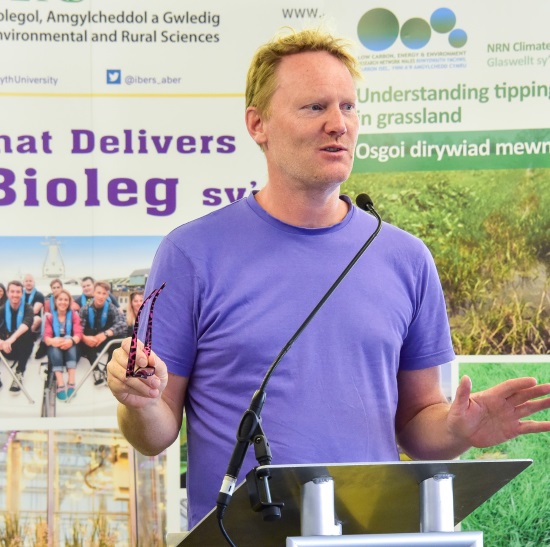
Professor Davey Jones, Bangor University, UK

Professor Davey Jones, Bangor University, UKDavey Jones holds a joint Professorship in Soil & Environmental Science between Bangor University, UK and the University of Western Australia. His research focuses on nutrient cycling in terrestrial ecosystems with emphasis on soil-plant-microbial interactions and understanding the links between land and water in relation to nutrients and human pathogens. He was Co-I on the NERC DOMAINE project and PI on the NERC VIRAQUA project looking at carbon cycling and microbiological quality in freshwater and marine systems. He advises Welsh Government and Defra on climate change and land use policy. He has published over 420 ISI journal articles on aspects of soil, water and atmospheric science. |
|
|---|---|---|
| 09:45 - 10:00 | Discussion | |
| 10:00 - 10:30 |
Landscape controls on DOM delivery to rivers of contrasting environmental character
Dissolved organic matter (DOM) plays an important role in freshwater biogeochemistry. The stoichiometry of organic matter has proved a useful tool in assessing compositional changes in the complex and dynamic pool of organic compounds that comprise DOM. What is not clear in the existing literature is whether DOM composition in streams can be reliably estimated from a knowledge of the landscape stores of DOM in soils and biota. To investigate the influence of catchment character on the quality and quantity of DOM in freshwaters, Dr Yates presents data from a national scale monitoring programme, collected as part of the NERC-DOMAINE Large Grant programme (NE/K010689/1). One hundred sites were sampled draining subcatchments of contrasting soil type, hydrology, and land cover between November 2015 and December 2017. The composition of the C, N, and P pool was determined as a function of the inorganic nutrient species (NO3-, NH4+, PO43-) and dissolved organic nutrient fraction (DOC, DON, and DOP) concentrations in each sample. DOM quality was assessed by molar DOC:DON and DOC:DOP ratios, and SUVA254. Catchment soil C:N ratio correlated significantly with DOC:DON, DOC:DOP, and SUVA254 with significant correlations observed between both the DOC:DON and DOC:DOP molar ratios and SUVA254. Dr Yates and his group infer from this that soil character, specifically the C:N ratio of the soil organic matter pool, has a significant influence on the composition of DOM in streams draining through these landscapes. 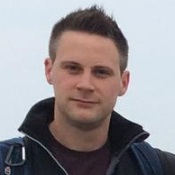
Dr Christopher Yates, University of Bristol, UK

Dr Christopher Yates, University of Bristol, UKChris gained his PhD from the University of Reading in 2014, researching the use of fluorescence spectroscopy to characterise dissolved organic matter across a range of UK freshwater ecosystems. Later that year he joined the NERC-DOMAINE programme where his work focussed on using a combination of laboratory experiments and in-stream sensor technologies to investigate how landscape scale processes drive changes in instream dissolved organic matter composition. Chris is currently working on the NERC funded PISCES project, investigating the impact of Patagonian ice field shrinkage on coastal and fjord ecosystems, with a focus on the changing export of nutrients. |
|
| 10:30 - 10:45 | Discussion | |
| 10:45 - 11:15 | Coffee break | |
| 11:15 - 11:45 |
Environmental controls on DOM composition in lakes: the role of climate and hydrology

Dr Anne Kellerman, Florida State University, USA

Dr Anne Kellerman, Florida State University, USADr Kellerman's research interests revolve around dissolved organic matter, its sources, sinks and factors that control its degradation and persistence. She is interested in a variety of aspects of organic matter biogeochemistry: the detailed characterization of chemical composition and controls thereof, the link between chemical composition and reactivity, the importance of intrinsic and extrinsic controls on organic matter persistence and reactivity, and the pathways that protect organic matter from microbial degradation. She is also interested in how the methods we use to characterize organic matter influence our interpretation of how it exists in situ. Such methods include absorbance and fluorescence spectroscopy, size exclusion chromatography, and ultrahigh resolution mass spectrometry. Her research questions often pertain to the effects anthropogenic activities have on organic matter characteristics, such as how land-use and climate change affect dissolved organic matter composition. Her biogeochemical interests have spread from lakes to a variety of aquatic ecosystem and soils. |
|
| 11:45 - 12:00 | Discussion | |
| 12:00 - 12:30 |
Molecular signatures of the Anthropocene
In the Anthropocene, a major uncertainty in our ability to predict how climate change and land cover change will affect the global carbon cycle centres on how dissolved organic matter (DOM) moves across the terrestrial‐aquatic interface and how the quantity and quality of DOM mobilized from soils to aquatic environments will change under these impacts. Climate change induced permafrost thaw in the Arctic is mobilizing ancient dissolved organic carbon (DOC) into headwater streams; however, DOC exported from the mouth of major arctic rivers appears predominantly modern. Here the researchers highlight that ancient (>20,000 years BP) permafrost DOC is rapidly utilised by microbes and the permafrost DOM unique molecular signatures, including high levels of aliphatics were rapidly utilised by microbes. In the tropics agriculturally driven land cover change resulted in aged DOM exported from deforested catchments that was energy rich and enriched in nitrogen- and sulphur-containing formulae. Given the molecular composition and biolability, the researchers suggest that organic matter from deforested landscapes is preferentially respired upon disturbance, resulting in elevated in-stream concentrations of carbon dioxide. Thus, the exposure of deeper soil horizons through deforestation and agricultural expansion releases old, previously stable, and biolabile soil organic carbon into the modern carbon cycle via the aquatic pathway. Taken together the team highlights the unique molecular signatures of climate change in the Arctic, and land cover change in the tropics, and draws attention to headwater streams as sentinels of anthropogenic change. 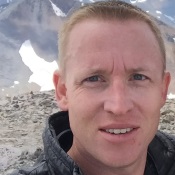
Dr Robert Spencer, Florida State University, USA

Dr Robert Spencer, Florida State University, USAResearch in Dr Spencer's laboratory aims to understand the fate of organic matter released from terrestrial systems into freshwater and marine systems. In order to understand these complex dynamics, the group employs advanced organic matter characterization techniques in areas that are difficult to reach and work in, but critical to study. In this quest to better understand anthropogenic impacts on the global carbon cycle, the group has undertaken diverse studies ranging from examining the fate of organic carbon released from glacial melting and permafrost thawing, to assessing the impacts of pristine land conversion on carbon export in watersheds like the Congo and Amazon. |
|
| 12:30 - 12:45 | Discussion |
Chair
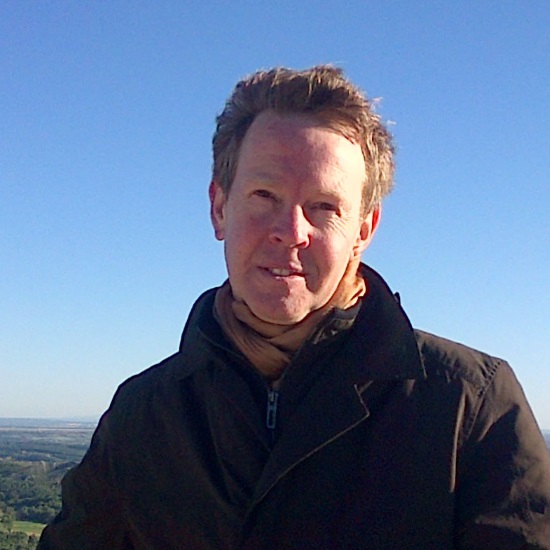
Professor Stephen Maberly, Centre for Ecology and Hydrology, UK

Professor Stephen Maberly, Centre for Ecology and Hydrology, UK
Stephen Maberly works at the Centre for Ecology & Hydrology at Lancaster. He undertakes research in limnology, carbon biogeochemistry and photosynthesis. His recent large projects include using Earth Observation to assess the status of lakes globally (GloboLakes), quantifying the ability of river photoautotrophs to use organic nitrogen and phosphorus compounds (DOMAINE) and measuring the effect of connectivity on nutrient cycling and productivity of lake and river cascades (Hydroscape). He has been a visiting professor or scholar at the University of Aarhus in Denmark, the University of Aix-Marseille in France and the Wuhan Botanical Gardens in China, and is a visiting professor at Queen Mary University of London.
| 13:45 - 14:30 |
Keynote: the fate and role of terrestrial DOM in inland waters, from molecular to global scale
Dissolved organic matter (DOM) in inland waters plays a substantial role in the global carbon cycle, and thus potentially affects climate as well. This presentation is an overview of the dynamics and fluxes of carbon involving DOM, from micro-scale to global scale. DOM is a heterogeneous mixture of decomposition products, and the reactivity and controls of the molecular composition are a central topic in aquatic biogeochemistry. Furthermore, DOM contributes substantially to evasion of carbon dioxide and methane to the atmosphere, but is also an important precursor of carbon that is buried in sediments. The loss of DOM from the water column is mediated via microbial and photochemical mineralization, as well as sedimentation upon formation of particles by flocculation or by sorption to minerals. The factors that constrain and promote loss of DOM from the water column will be discussed, and compared across different habitats, from soil to sea. 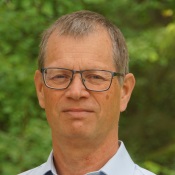
Professor Lars Tranvik, Uppsala University, Sweden

Professor Lars Tranvik, Uppsala University, SwedenLars Tranvik received a PhD in limnology from Lund University, Sweden, in 1990. He is a professor at Uppsala University, Sweden. His research has developed from aquatic microbial ecology, in particular the role of heterotrophic bacteria in food webs and as consumers of dissolved organic matter, to a broader focus on the carbon cycle of inland waters. Recent research is focused on how terrestrial organic matter is transformed in the water column resulting in a subsidy to aquatic food webs, a sediment carbon sink, and emission of carbon dioxide and methane to the atmosphere. Currently, he shares his time between research and teaching at the Limnology program, and being head of the Department of Ecology and Genetics. |
|
|---|---|---|
| 14:30 - 14:45 | Discussion | |
| 14:45 - 14:55 | Discussion | |
| 14:45 - 15:15 |
Can we predict dissolved organic nitrogen and phosphorus use by river phytoplankton?
Dissolved organic matter loading to freshwaters is increasing. Consequently, increasing dissolved organic nutrient concentrations may be contributing to the enrichment of rivers and lakes leading to changes in algal productivity and community composition. However, while we have evidence to suggest that many different compounds are bioavailable to algae, we know much less about how this bioavailability varies with environmental conditions, such as the ambient nutrient concentration of a site or acclimation of the algal community. This study presents results from two different spatial scales of the DOMAINE project, assessing bioavailability of different dissolved organic nitrogen and phosphorus compounds to river phytoplankton. Firstly, a statistical model was developed to predict dissolved organic nutrient use based on nutrient concentration data from six sites along a nutrient gradient in two contrasting rivers. The relative bioavailability of different organic nitrogen and phosphorus compounds and the ambient river nutrient concentrations were determined over the course of one year at these sites. This model was then applied to a one off survey of 25 sites from differing geologies and land uses across Great Britain to assess whether our understanding of dissolved organic nutrient use can be readily up-scaled using a simple model. Results indicate that nutrient limitation, dissolved organic compound bioavailability and algal productivity differ among sites, but consistent patterns of bioavailability are closely linked to the level of nutrient enrichment. 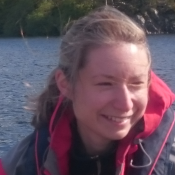
Dr Eleanor Mackay, UK Centre for Ecology & Hydrology, UK

Dr Eleanor Mackay, UK Centre for Ecology & Hydrology, UKDr Mackay is a freshwater nutrient ecologist with 11 years of experience in research on multiple aspects of lake and freshwater ecology. Her research interests include elucidating the role of algae within biogeochemical cycles, particularly in relation to the nutrients phosphorus and nitrogen. She utilises a range of different approaches in her work including the analysis of long term and high frequency monitoring data, statistical and process-based modelling and laboratory experiments. As part of the DOMAINE project, she has been involved in experiments to investigate the availability of organic nitrogen and phosphorus compounds to stream algae (phytoplankton, epilithon) and higher plants. Examining the controls on the bioavailability of organic nutrients across different habitats over time. |
|
| 15:15 - 15:30 | Discussion | |
| 15:30 - 15:45 | Tea break | |
| 15:45 - 16:15 |
The challenging task of getting the carbon cycling and microbial ecology in high-alpine streams on the global map of carbon cycling and microbial ecology
Mountains cover one quarter of the land surface and contribute more than one third to the global runoff. Despite this, the biogeochemistry and microbial ecology of the streams that drain the roof of our planet are relatively poorly understood at present. A general lack of interest in these ecosystems combined with logistical difficulties linked to their study figure among the prime causes for them still being blank spots on the map of aquatic biogeochemistry. In this presentation, Professor Battin will unveil high-mountain streams as relevant for global carbon dioxide fluxes and propose scenarios for how export fluxes of dissolved organic matter (DOM) may change as mountain glaciers shrink. He will also show how the chemical composition of DOM may change across an alpine stream network, particularly as it crosses the treeline. In this context, he shall discuss the relevance of hydrological parameters for DOM biogeochemistry, an angle that appears particularly relevant given that hydrological regimes are prone to alterations because climate change. Finally, he will shed new light on the potential role of the microbial life for biogeochemical fluxes in glacier-fed streams. The aim of this presentation is thus to highlight the relevance of mountain streams for the large-scale biogeochemistry. This appears important to us because ecosystems interfacing with the cryosphere are predicted to be particularly vulnerable to global warming. 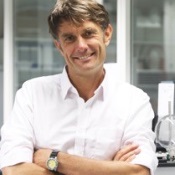
Professor Tom J Battin, École Polytechnique Fédérale de Lausanne, Switzerland

Professor Tom J Battin, École Polytechnique Fédérale de Lausanne, SwitzerlandTom Battin is still excited by studying the ecology of microbial biofilms and their involvement in biogeochemical cycles in streams. His laboratory combines extensive fieldwork with experimental work and modelling to understand and predict coupled physical, chemical and biological processes in stream ecosystems. Lately his laboratory has become involved in the study of glacier-fed streams and their microbiome around the world. He received his PhD from the University of Vienna where he was Chair in Limnology. Currently he is Professor at the Ecole Polytechnique Fédérale de Lausanne. |
|
| 16:15 - 16:30 | Discussion | |
| 16:30 - 17:15 | Panel discussion/Overview (future directions) |
